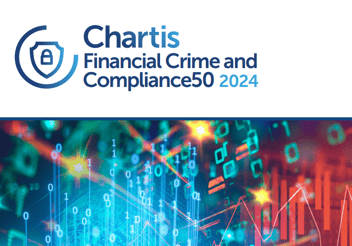It’s easy to say that financial crime is becoming a more complex challenge to face. What’s harder is pinpointing why. As with any complex issue, the reasons for an increase in financial attack vectors are multiple.
But it’s only by understanding these vectors – and the vulnerabilities they highlight – that we can look forwards, and see the solutions that tomorrow’s financial institutions will need to employ to stay afloat…
Pinpointing the problems
In 2021, criminals are using more innovative technologies, and have more resources at their fingertips, than ever before. In recent years we’ve seen a rise in money mule accounts; trade-based money laundering; the proliferation of cryptocurrencies; trafficking; and even criminal use of third-party advisers.
And then, of course, there’s COVID-19. Clearly, a pandemic brings with it a broad set of stories to tell, but one of the lesser-reported side-effects of such a widespread event is that, because it’s driven a rise in digital payments, it’s also driven a rise in financial crime.
Increased volumes of online banking and cashless payments have, over the past year, provided fertile new ground for criminals, and a raft of increased financial crime opportunities have arisen as a result.
Consequently, the requirements for compliance when it comes to detecting, filtering and reporting financial crime in real-time are getting even more challenging. So what’s the solution?
The rise of machine learning
The long and short of it is this: in this new digital era, it’s become imperative for financial institutions to supplement their traditional rules-based compliance systems with solutions that can learn, adapt and meet the demands of never-before-seen transactional volumes.
To us, that means making a proactive shift towards risk-based solutions that incorporate analyses of patterns, behaviours and trends quicker, and with greater accuracy, than humans ever could.
And that’s where AI, machine learning and technologies like the blockchain come in.
We see the future of compliance technology solutions hinging on artificial intelligence for anomaly detection, and for forecasting future behaviours. The ability to scour unfathomable amounts of data, seek out patterns and spot outlying behaviour as it happens – or in some cases before – allows financial institutions to take a proactive approach to security and compliance for perhaps the first time in the sector’s history.
Holistic compliance solutions that link data from different, siloed systems is the key to building comprehensive, contextual insights for combating financial crime. That kind of data is extremely powerful.
However, we know that it’s one thing to keep abreast of latest market trends, and another to implement them successfully.
That’s why we offer all the tools needed to bring your financial compliance into the 21st century – with future-proof technologies that adapt as your business does. To find out more about our use of machine learning and the blockchain, head over to our Innovation section.
Author
Saeed Patel, Group Product Development Management Director
Saeed Patel is Group Product Development Management Director at Eastnets. Saeed has over 25 years' experience working in capital markets, risk management technology firms and as technical advisor to European regulatory boards. Saeed is a Chartered Management Accountant and holds a BA (Hons) in Business & Finance.





